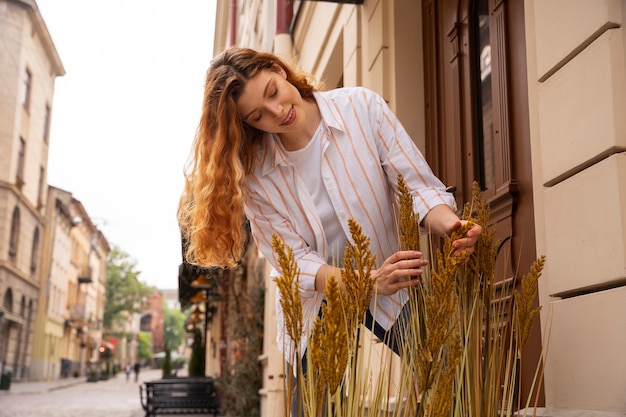
In this article, our guest writer Francesco Visconti takes us on a weekend trip to Verona, exploring the true Italian essence of the city beyond the famous Romeo and Juliet story.
Everyone knows Verona as the setting for Shakespeare’s Romeo & Juliet, and lovers flock there to see Juliet’s balcony. But for an Italian traveler like me, who seeks to uncover the real soul of a place, it’s clear that Verona offers much more, and its romantic charm existed long before Juliet’s balcony became famous.
A few weeks ago, I spent a weekend in Verona with my girlfriend. I had visited once before when I was 12 with my family, but this time, I truly appreciated what makes Verona special compared to other Italian destinations, something that one-day visitors might miss.
We arrived at the train station on Friday afternoon, just after lunch. Early autumn is the perfect time to visit Verona, with fewer tourists, pleasant weather, and beautiful colors everywhere. At this time of day, the streets are quiet, allowing you to enjoy the peaceful atmosphere on Corso Porta Nuova, the grand boulevard leading from the 16th-century Porta Nuova to the city center.
At the end of the boulevard, we passed under two arches into Piazza Brà, stepping back in time. We left the modern city behind and entered the old Roman town of Verona, symbolized by the Arena, the second most famous Roman amphitheater after the Colosseum. The Arena is shorter but wider than its Roman counterpart, perfectly preserved, and renowned for its incredible acoustics, making it ideal for concerts and music festivals.
Until ten years ago, the Arena hosted Italy’s most popular music festival, Festivalbar. During my first visit to Verona, the festival was in full swing, so I couldn’t explore the Arena. This time, I was thrilled to see it from the inside, walk on the sand, and climb the steps to the top for a view of the surrounding rooftops.
Unlike the Colosseum, where you can hardly touch anything, the Arena allows you to roam freely. Instead of jostling with thousands of tourists for a good photo, we were almost alone, letting our imaginations transport us to the era of gladiators.
We spent a good part of the afternoon in Piazza Brà, and when we emerged from the Arena, it was “Spritz time.” The Spritz is a typical drink from Verona and the Veneto region, enjoyed around the same time that the English have tea.
In search of a nice bar, we transitioned from the Roman to the medieval era, strolling through the pedestrian streets within the old town walls. What struck me was that almost the entire area is pedestrianized, something I haven’t seen in any other Italian city, making the walk even more enjoyable. We found bustling streets filled with people shopping, eating ice cream, or relaxing at bars with their Spritz.
After our spontaneous Friday night tour, we planned our Saturday to explore the rest of the city. Our first stop was Juliet’s house and balcony. We tried to go early, but no matter the time, half the tourists in town are always there, gazing at the balcony or the statue of Juliet below it.
After participating in the ritual for a while, we moved on to the more enjoyable Piazza delle Erbe. This square has always been the heart of Verona: it’s the oldest square, built on the ruins of the Roman Forum, and has been a market site and now a nightlife hub, full of bars and restaurants.
Piazza delle Erbe is also a stunning collection of monuments and buildings from different eras: the municipal house, the Lamberti tower, the painted Mazzanti houses, the fountain with the statue of the holy Mary, the “Tribuna,” and the column with the Lion of St. Mark, symbolizing the power of the old Republic of Venice, which ruled Verona in the 15th century.
These attractions blend seamlessly, like a colorful painting, and at first glance, you might not even realize the rich cultural and historical wealth they represent.
After taking a moment to breathe, we continued our tour. Just 20 meters behind the municipal house, we reached another amazing square: Piazza dei Signori, with a statue of Dante Alighieri at its center. The imposing statue led the locals to nickname the square Piazza Dante. This medieval square is surrounded by monumental buildings, each connected to the next by arches. In one corner stands perhaps Verona’s most unique monument: the “Arche Scaligere,” open-air tombs topped by Gothic arches, honoring the illustrious Scaligeri family who ruled the city in the 14th century.
After a quick look at the cathedral and the basilica of St. Zeno, we visited Castelvecchio in the late afternoon. We timed our visit to enjoy a sunset walk across the charming Scaligeri bridge, which spans the river from the castle, and continued along the Adige River to the Pietra bridge, the only remaining Roman-era bridge. For a romantic experience in Verona, visit this part of town under the night lights!
We dedicated Sunday to shopping and sampling typical food from the Veneto region. While a foreigner might not notice the difference and find all Italian food delicious, as an Italian who eats pasta every day, it was essential to find a “trattoria” with authentic Veronese cuisine!